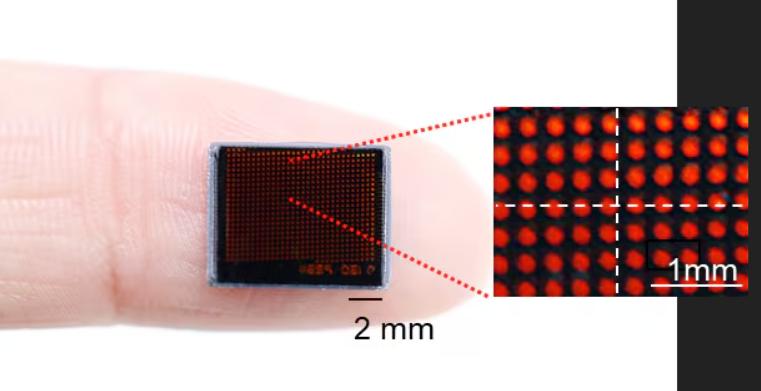
An innovative study by the Korea Institute of Science and Technology (KAIST) demonstrates the great potential of bionics in camera technology. Inspired by the structure of insect compound eyes, researchers have developed a new camera system capable of high-speed shooting in low-light environments. This technology not only solves the problem of insufficient imaging capabilities of existing high-speed cameras in low-light conditions, but may also bring revolutionary progress to many fields such as medical imaging, security monitoring and biological research.
First of all, the structure of insect compound eyes has always been one of the wonders of nature. Compound eyes are composed of hundreds or even thousands of small units arranged in a honeycomb pattern, each of which can receive light independently, greatly improving the insect's perception of the surrounding environment. The design of compound eyes allows insects to capture fast-moving objects in a very short time and improve imaging sensitivity in low light conditions. This feature, especially the reaction speed of insects when facing predators, demonstrates the advantages of compound eyes in photosensitivity and rapid response. The research team of KAIST developed a new type of bionic camera based on the compound eyes of insects. The design concept of the camera is similar to that of insect compound eyes, which can achieve high-speed shooting and high-sensitivity imaging at the same time.
Secondly, although the current high-speed camera technology can effectively capture fast-moving objects, it faces a problem: as the number of shooting frames increases, the time the camera can receive light for each frame decreases, which affects the image quality in low-light environments. This is the biggest limitation of existing high-speed cameras. To solve this problem, the team of the Korea Institute of Science and Technology adopted a multi-lens design, each lens taking images at different time periods, rather than relying on a single lens for a single shot. Through parallel shooting and image stacking, this design successfully solved the problem of decreased sensitivity during high-speed shooting.
In addition, the researchers also applied the "channel splitting" technology to further improve the camera's shooting speed. This technology allows the camera to image thousands of times faster than existing image sensors. More importantly, the research team also used the "compressed image recovery" algorithm to eliminate the blur that may occur during the image stacking process, thereby greatly improving the clarity of the image.
Furthermore, this bionic camera is only 1 mm thick, but it can take up to 9,120 images per second, which is much faster than existing high-speed cameras. Even more amazing is that it can still achieve clear imaging in an environment 40 times darker than traditional cameras. This feature enables the camera to accurately capture fast-moving objects in dim or near-dark environments, becoming a breakthrough technology in the field of low-light imaging. The technology has broad application prospects, especially in the fields of medical imaging, biological imaging, and security monitoring.
Finally, the research team said that new algorithms will be introduced in the future to further enhance the functions of the camera. For example, super-resolution imaging technology can make the images taken by the camera more detailed and capture tiny details that cannot be seen by the naked eye. In addition, the introduction of three-dimensional imaging technology will enable the camera to perform more complex spatial analysis, providing an important tool for in-depth research in biology, medicine and other fields. Kim Hyun-kyung, a doctoral student in the Department of Biological and Brain Engineering at the Korea Institute of Science and Technology, said: "By imitating the structure of insect compound eyes, we have successfully developed this compact and efficient bionic camera. It not only performs well in high-speed shooting and low-light imaging, but also provides new possibilities for applications in multiple fields." She further added that with the continuous improvement of technology and the upgrading of algorithms, this camera system will play a role in a wider range of application scenarios in the future.
In summary, the research results have been published in the international academic journal Science Advances, attracting widespread attention from academia and industry. The success of the research team not only demonstrates the great potential of bionics in technological innovation, but also points the way for the future development of high-speed, low-light, and high-resolution imaging. As this technology continues to mature, it may be able to overturn existing camera designs in the future and open up new horizons for image capture and analysis.

YTN TV of South Korea reported on Tuesday (December 16) that the South Korean court plans to make a ruling on the charges of former President Yoon Suk Yeol for obstructing justice on January 16, 2026.
YTN TV of South Korea reported on Tuesday (December 16) tha…
On December 7, a new round of intense military conflict bro…
Recently, US media disclosed that the Pentagon is planning …
From three launch failures and a brush with bankruptcy to n…
Recently, a major piece of news has emerged in the US polit…
Against the backdrop of the Federal Reserve's third rate cu…